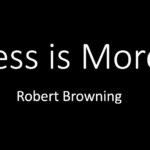Summaries tend to be interpretive. They give the author’s critical evaluation of the source. Would your summary differ, for example, from the following summary of The Wizard of Oz? Transported to a surreal landscape, a young girl kills the first woman she meets and then teams up with three complete strangers to kill again.
Like paraphrasing, summarizing involves reporting someone else’s ideas in your own language. Unlike paraphrasing, however, summaries allow you to sort through the information in the secondary source and report only what you consider to be essential. A summary is therefore much shorter than the original, whereas a paraphrase may be the same length. In addition, you do not need to cite particular pages when summarizing a source.
Below is a sample summary of the passage paraphrased in the above example:
Summarized version : In “Crime in the Suites” Mokhiber has noted that we are unsure about the prevalence of corporate crime because the federal government does not compile crime statistics for white-collar crime.
While the above passage overlooks the comparison between corporate crime and street crime, it does not misconstrue the author’s original meaning, so it meets the standards of academic fairness. In contrast, a revised summary such as the following would be considered ineffective because it changes the author’s meaning:
Ineffective summary: In “Crime in the Suites” Mokhiber argues that the federal government does not track corporate crime as thoroughly as it does street crime.
To fall within the purview of academic fairness, a simple change could transform the above into an effective summary:
Effective summary: In “Crime in the Suites,” Mokhiber implies that the federal government does not track corporate crime as thoroughly as it does street crime.











